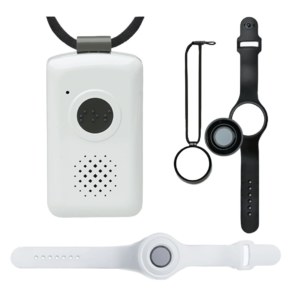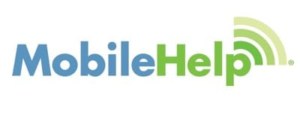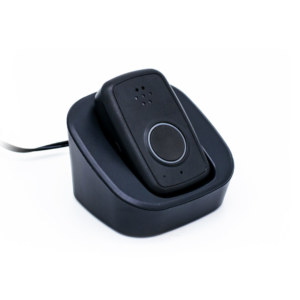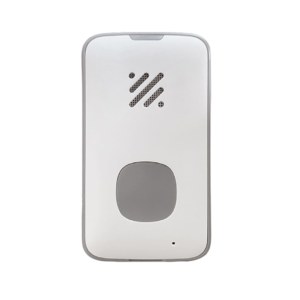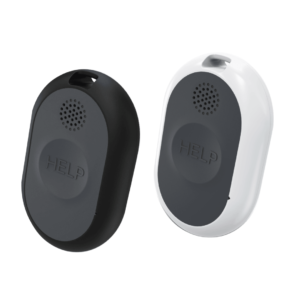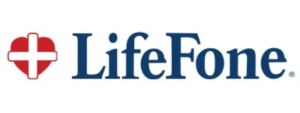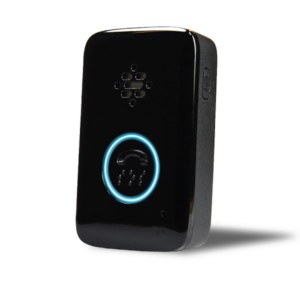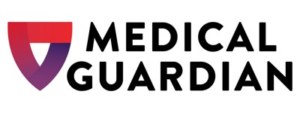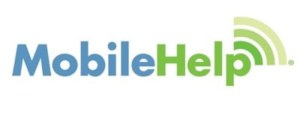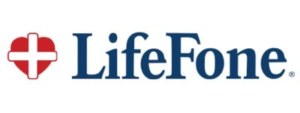Best Mobile Medical Alert Systems
Whether you’re an active senior or someone looking for an extra layer of protection when on the go, investing in a mobile medical alert system is one step you can take to keep yourself safe and connected to emergency services at all times.
Staying safe while you’re away from home is critical, especially when you consider that one in four older adults experience a fall every year, according to the Centers for Disease Control and Prevention (CDC). A mobile medical alert device makes it easier to contact emergency services during a medical emergency like a fall.
Our experts have compared several mobile medical alert devices, eliminated those that don’t make the cut, and selected the best in five categories. Here are our top picks for the best mobile medical alert system for 2022.
Key Takeaways
- Mobile medical alert systems are a good investment if you need quick and easy access to a monitoring center or emergency services when away from home.
- A mobile medical alert system comes with a wearable help button that works via cellular service. It connects to a monitoring center, emergency services, or a loved one in the event of an emergency.
- Most mobile medical alert systems come equipped with GPS, allowing loved ones and monitoring center operators to identify the person’s exact location wearing the mobile medical alert device.
- Monitored medical alert systems require a monthly fee that may also include equipment costs.
- Automatic fall detection is available with some mobile medical alert systems.
Overview
A mobile medical alert system provides 24/7 access to a monitoring center that summons help during an emergency. These systems are equipped with a wearable help button that connects you to a dispatcher via two-way communication. You can activate the help button by pressing it, or if it is voice-activated, you can speak into it instead. The operator will respond to your call and determine if you need emergency services or if a friend or loved one can be contacted to help. If it comes with GPS tracking, operators and responders can pinpoint your exact location even if you cannot relay that information.
One thing that makes medical alert systems so versatile is they work at home and on the go. It’s important to note the differences between an in-home system and a mobile medical alert device.
An in-home system connects to a base station through a landline or cellular connection. It only works within a certain range from the base station. A mobile medical alert system works anywhere there is a cellular signal. These devices are often equipped with a GPS-tracking feature that allows the monitoring center or emergency services to pinpoint your exact location.
Pros and Cons of Mobile Medical Alert Systems
Pros
-
Works anywhere the cellular service provides coverage.
-
Works with a medical alert company’s cellular service, so there’s no need to pay extra for a cellular plan.
-
Help buttons include wearable neck pendants, wrist-style devices, and smartwatches.
-
Smartwatches have extra features like a step tracker, health monitoring, and texting capabilities.
-
Some mobile medical alert devices are considered more stylish than in-home wearable help buttons.
-
They are equipped with GPS-tracking abilities to allow caregivers, monitoring center operators, and emergency services to pinpoint an exact location.
Cons
-
Automatic fall detection is not always an available feature.
-
Devices may require an upfront equipment fee for smartwatches and other wearable buttons.
-
Mobile medical alert devices need to be recharged frequently, sometimes daily.
-
May fail to connect if you’re in an area without cellular service.
Best Mobile Medical Alert System Reviews
Type of medical alert: Mobile, in-home, pendant, bracelet, and smartwatch
Cost for mobile systems:
- Mini Guardian
- $124.95 equipment fee
- $39.95/monthly subscription fee or $119.85/quarterly or $439.45/yearly
- Mobile 2.0
- $124.95 equipment fee
- $39.95/monthly subscription fee or $119.85/quarterly or $439.45/yearly
- MGMove Smartwatch
- $199.95 equipment fee
- $39.95/monthly subscription fee or $119.85/quarterly or $439.45/yearly
Pros
-
Several premium features available
-
TMA Five Diamond Certification
-
Extended battery life
Cons
-
Three of the four mobile systems have equipment fees
-
$10 additional monthly charge for automatic fall detection
-
More expensive than other medical alert systems
Active seniors looking for excellent mobile coverage will like what Medical Guardian offers. The company currently has two mobile medical alert systems: the Mini Guardian and Mobile 2.0. Medical Guardian replaced its Freedom 2.0 smartwatch with the new MGMove smartwatch. This sleeker model features an emergency help button, heart rate monitoring, voice-to-text messaging, and more.
All three mobile systems are water-resistant and come with the MyGuardian Portal, GPS location tracking, two-way talk outside the home, and OnGuard notifications. Fall detection isn’t available with the MGMove.
The Mobile 2.0 is also helpful at home, and wall-mounted help buttons, voice assist, and extra neck/wrist buttons are optional add-ons. The Mini Guardian is a petite, discreet GPS-enabled help button you can carry in a bag, wear around your neck, or clip to a belt. It’s available in black, silver, or white. The Active Guardian was a third mobile option from Medical Guardian, but it’s been retired.
Both the Mini Guardian and Mobile 2.0 require an upfront equipment fee in addition to the monthly subscription fee. And if you want automatic fall detection, it’s an extra $10 per month.
In addition to the mobile systems, Medical Guardian also offer in-home plans. The Home 2.0 and Classic Guardian are ideal for anyone looking for a home medical alert system with a generous in-home range: 1,400 feet with Home 2.0 and 1,300 feet with Classic Guardian.
See Our Full Medical Guardian Review.
Type of medical alert: Mobile, in-home, pendant, bracelet, and smartwatch
Cost for mobile systems:
- Solo
- $37.95/monthly subscription or $104.85/quarterly, $197.70/semi-annually, or $395.40/yearly
- Micro
- $33.95/monthly subscription or $101.85/quarterly, $173.70/semi-annually, or $347.40/yearly
Pros
-
Can add MDLIVE to any plan for $9.95 per month
-
Premium equipment protection for $5 per month
-
Free lockbox
-
Risk-free 30-day trial
Cons
-
Wearable may not be as “stylish” as other systems
-
$10 additional monthly charge for automatic fall detection
MobileHelp medical alert systems include both at-home and on-the-go systems. The company’s mobile plans include the Solo and Micro. Both devices combine GPS and cellular technology, enabling the monitoring center to be notified of your exact location after activating the help button. This establishes two-way voice contact with the emergency monitoring center.
The MobileHelp Solo is an excellent choice if you want to use a mobile medical alert at home and on the go. It comes with an oval-shaped GPS-enabled help button you can wear around your neck or on your wrist. Plus, the button is waterproof, so you can wear it in the shower. When away from home, the Solo relies on GPS technology and nationwide cellular coverage from AT&T to connect with the monitoring center.
If you want a small and discreet mobile device, consider the MobileHelp Micro. This sleek device uses GPS technology and nationwide cellular coverage from AT&T and LTE network to connect you with the monitoring center. It comes with a detachable lanyard and only weighs 52 grams—a truly compact mobile device.
And finally, if you want the option of bundling an at-home and mobile package, you will appreciate the Mobile Help Duo, which combines the at-home and on-the-go systems for complete coverage. This package starts at $41.95 per month, and it comes with the help button, mobile unit, and in-home base station.
See Our Full MobileHelp Review.
Pros
-
Caregiver app included in monthly fee
-
Automatic fall detection is included in monthly fee
-
30-day money-back guarantee
Cons
-
Costly one-time equipment fee
-
Higher costs than other brands
The Mobile Companion from Aloe Care Health is a solid choice for seniors who want a cellular-connected device while away from home. It’s also an excellent system to consider for loved ones who want to stay updated via the Aloe Care App, which allows users to communicate with caregivers remotely through the voice-activated care button. This app is designed for both professional caregivers and family members. Since it allows multiple users to access the app, you can set up a team to keep everyone connected.
The Mobile Companion uses GPS, Wi-Fi, and cellular coverage for location tracking and to connect you to the monitoring center. It also has two-way speakers and microphones on the device, allowing you to speak directly to the call center. Plus, you get automatic fall detection at no additional cost—something that is often an add-on fee with other companies.
Although the Mobile Companion is Aloe Care Health’s only true mobile medical alert system, Aloe Care Health offers two other plans that include in-home and mobile coverage. The Essentials Plus plan gives users an in-home hub and care button along with the mobile companion device for $39.99 per month with a one-time equipment fee of $249.99. The other system is the Total Care plan, which comes with all Essentials Plus plan features and automatic fall detection, a voice-recognition care button, and motion sensors that notify the care team of unusual activity at home. This system costs $49.99 per month with a $349.99 one-time equipment fee.
See Our Full Aloe Care Health Review.
Type of medical alert: Mobile, in-home, pendant, bracelet, and smartwatch
Cost for mobile systems:
- GPS Mobile Lite
- $79 equipment fee
- $29.95 monthly subscription fee
- GPS Mobile Plus (includes fall detection)
- $79 equipment fee
- $39.95 monthly subscription fee
- SOS Smartwatch
- $159 equipment fee
- $29.95 monthly subscription fee
Pros
-
Affordable monthly fees
-
TMA Five Diamond Certification
-
Spouse coverage option
Cons
-
Additional monthly charge for automatic fall detection
-
Help button is larger than other systems
-
Device costs extra
Living within a budget often requires comparison shopping and paring down extras and add-ons. But it doesn’t have to mean cutting corners when it comes to quality. Bay Alarm Medical delivers a quality mobile medical alert system without compromising essential features like cellular connection, response time, and device options.
Bay Alarm Medical has two mobile options: Mobile Lite and Mobile Plus. Both come with the same features and design, but the Mobile Plus also has fall detection. The Mobile Lite and Mobile Plus feature 4G LTE for fast response times, and Caregiver Tracking is included in the monthly cost.
If you’re in the market for a smartwatch that also doubles as a help button, the SOS Smartwatch is worth considering. This stylish watch has an easy-to-use touchscreen, and it does not require a smartphone to operate. It’s powered by a 4G LTE SIM card, and it comes equipped with GPS. Plus, the SOS has built-in speakers and a built-in microphone allowing two-way communication with the monitoring center in an emergency.
See Our Full Bay Alarm Medical Review.
Pros
-
Exceptional lifetime warranty
-
30-day money-back guarantee
-
Provides one of the best battery lives in the industry
Cons
-
$5 additional monthly charge for automatic fall detection (but lower than typical $10/month fall detection charge)
-
More costly than other brands
LifeFone has a variety of in-home, mobile, and bundled packages available, making it easy to find a system that works for you. The mobile medical alert systems from LifeFone include the Voice-In-Pendant (VIP) and VIPx.
The VIP works at home and on the go with Verizon or AT&T 4G LTE cellular service. This lightweight, water-resistant pendant can be worn on a belt clip or around your neck. It also has one of the longest battery lives in the industry—up to 30 days. The VIP has a powerful speaker and microphone that makes it easy to hear and be heard by the monitoring center operator.
The VIPx is LifeFone’s smallest and most lightweight mobile help button available in black, silver, and white. It works with Verizon or AT&T 4G LTE cellular service, and it comes equipped with GPS technology. For an additional $8 per month, The VIPx also comes with the optional Caregiver Mobile App that helps provide peace of mind for users and loved ones. This app allows users to locate the device on demand, check the first motion of the day, track steps, and more. You can also add automatic fall detection for $5 per month.
LifeFone also has a bundled at-home and on-the-go package that comes with a lanyard and wrist button and base station. At home, the help button connects to the monitoring center via the base station, and away from home, it uses AT&T’s 4G cellular network to connect. This system costs $39.95 per month.
See Our Full LifeFone Review.
Other Medical Alert Systems that Didn’t Make the List
While we couldn’t list all the mobile medical alert systems in this roundup, we did choose our top picks and the most popular brands rated by consumers. With that said, there are several other mobile medical alert systems worth considering, including:
How to Choose the Mobile Medical Alert System That’s Right for You
A medical alert system is an investment in your health and safety. Finding an affordable mobile device that meets your needs may make it more likely that you will regularly wear and use the help button. However, you may need to make some decisions about trade-offs when settling on a device, such as savings versus premium features.
If budget is a concern, look for systems that allow you to lease the equipment and include the cost in the monthly fee. In general, monthly fees for a mobile medical alert system range from $19.99 to $49.99. What you get for the higher end may come down to premium features like a caregiver app, health and medication reminders, fall detection, voice-activated wall buttons, and more. Consider the more affordable brands if you’re just starting and want a basic system with a wearable neck or wrist help button.
Another thing to consider is the skill level and attentiveness of the customer service and monitoring center staff. Make a few phone calls to the customer service department and see how you’re treated. Ask about the response time and if the operator stays on the line with you until help arrives. Also, read online reviews and customer complaints about each medical alert company you’re considering. You can find reviews on Trustpilot, Better Business Bureau, Best Company, and Google reviews.
Features to Consider When Shopping for a Mobile Medical Alert System

If you’re considering a mobile medical alert system but feeling overwhelmed with all the choices, consider some features to help with the decision-making process.
24/7 emergency response: Monitored medical alert systems come with 24/7 emergency response services that connect you to a monitoring center after activating the help button on your medical alert device. An operator will help you determine if you need emergency services or if a family member or loved one can be contacted instead. When shopping for a mobile medical alert device, look for a monitoring center with a TMA Five Diamond certification.
Equipment fees: Some medical alert companies have upfront equipment fees for wearable devices like a medical alert smartwatch in addition to the monthly monitoring fee. Other companies lease the equipment and include the cost in the monthly monitoring fees. If you opt for an unmonitored medical alert system, you will be required to purchase the equipment outright.
Monthly rates: Monthly monitoring fees cover 24/7 emergency response services. This gives you access to an urgent response agent during a medical emergency. Monthly rates also include equipment fees if you lease the device and base station.
Two-way communication: Two-way communication is a special feature on some medical alert devices that allow communication through voice-activated speakers. This means you can alert an operator at the monitoring center simply by speaking into the device.
Caregiver apps: Some medical alert systems come with a caregiver app that allows loved ones to pinpoint a user’s exact location, alert them when the user leaves a specific location, receive notifications when the device battery is low, and more. Caregiver apps are often a critical feature for senior safety.
Quick response time: The time it takes to activate the help button to when an operator responds to your call is considered the response time. This is a critical component of a medical alert system. In general, response times can range from 20 to 50 seconds, with some companies advertising an even faster response time.
Water resistance: Wearable wrist and neck help buttons are most accurate when worn all the time. With that said, some people have concerns about showering or bathing while wearing a help button. The good news is that most help buttons are water-resistant or waterproof. If it’s water-resistant, avoid submerging the button in water like you would while swimming.
Extended battery life: The battery life of a mobile medical alert device can range from 18 hours to several days. Mobile medical alert systems typically require recharging in the charging cradle daily or every couple of days. In addition, base stations that plug into a wall come with a backup battery in the case of a power outage. These often last up to 72 hours.
GPS location services: A mobile medical alert device with GPS tracking and location services allow an emergency responder, monitoring center operator, or loved one to locate you in case of an emergency. This is a critical feature if you’re on the go and unable to identify your location.
Long-range: In-home units are connected to a base station. The range determines how far you can travel around your home or yard with a help button. For example, some medical alert systems have a generous range of 1,400 feet from the base station, while others only cover 300 feet.
Nationwide coverage: Mobile medical alert systems rely on a cellular network for coverage. The company you go with will provide the cellular service, generally AT&T, Verizon, or T-Mobile. Nationwide coverage provides service across the entire United States. Before settling on a system, this is a feature to ask about, especially if you live in an area with limited cell service.
Fall detection: Automatic fall detection is a safety feature available with many mobile medical alert systems. This feature can automatically detect a fall based on motion and contacts the response center even if you can’t activate the help button. Automatic fall detection is sometimes included in the monthly monitoring fee or available at an additional cost of $5 to $10 per month. If you live alone or are at an increased risk of falling, this is a feature worth considering, especially since fear of falling becomes more common as people age, causing many seniors to avoid certain activities, according to the National Institute on Aging.
Easy setup: The ease of setup is a key feature to consider when shopping for a medical alert device. Some systems are plug-and-go, meaning you plug in the base unit, make sure the help button is charged, test the system, and begin using the device. Mobile medical alert systems are often easier to set up than in-home systems that include a base station and can be up and running in under 15 minutes.
Cellular monitoring: Mobile medical alert systems rely on a cellular network for coverage. The company you go with will provide the cellular service, generally AT&T, Verizon, or T-Mobile.
Summary
A mobile medical alert system helps older adults maintain independence while at home and on the go. They also provide peace of mind for family and loved ones. Finding the right system for your needs increases the likelihood of you using the device regularly, so it’s important to take your time and do a lot of comparison shopping when deciding on a mobile medical alert system.
In our research, five companies stood out as top performers for mobile medical alert systems, including Medical Guardian, Bay Alarm Medical, Aloe Care Health, MobileHelp, and LifeFone.
Medical Guardian is worth considering if you live a more active lifestyle. Older adults looking for a budget-friendly option will like the rates that come with Bay Alarm Medical, while seniors wanting access to a bundled plan that includes at-home and on-the-go coverage should check out MobileHelp’s lineup. But if a caregiver app is a key feature, then LifeFone is the place to start. And finally, if you want a device with long battery life, LifeFone is your go-to mobile medical alert system.
Frequently Asked Questions
-
Medical alert systems come with a price tag that can include upfront costs and monthly fees. In general, these expenses are not covered by Medicare, even though a mobile medical alert device is designed with your health and safety in mind. Medicare Part A and Part B do not cover medical alert systems. However, if you have a Medicare Advantage Plan, you may want to call the benefits department to ask about coverage. Some Medicare Advantage Plans, also called Medicare Part C, may provide benefits for medical alert systems.
Other Medical Alert Guides And Medical Alert Systems That We Have Reviewed
- Best Medical Alert Systems
- Best Medical Alert Systems with Fall Detection
- Best Personal Emergency Response Systems (PERS)
- Best Medical Alert Systems With No Monthly Fee
- Best Medical Alert Watches for 2022
- Best Medical Alert Bracelets for Seniors
- Best Medical Alert Systems with GPS
- Medical Guardian Review
- Aloe Care Health Review
- MobileHelp Review
- Bay Alarm Medical Review
- Medical Alert Review
- GreatCall Review
- LifeStation Review
- LifeFone Review
- Philips Lifeline Review
- MobileHelp Smart Review
- Alert1 Review
- ADT Medical Alert Review
- Apple Watch Medical Alert Review
- GreatCall Lively Mobile Reviews
- Rescue Alert Medical Alert Review
- Life Alert Review
Learn More About Medical Alert Systems
- Does AARP Cover Medical Alert Systems?
- Is a Medical Alert System Tax-Deductible?
- Medical Alert Systems Covered by Medicare
- Who Should Wear a Medical Alert System?
- Pros and Cons of a Medical Alert System from Wal-Mart
- What Is The Cost of Medical Alert Systems
- Medical Alert Jewelry Options
Pricing is accurate as of March 30, 2022.
WRITTEN BY
Sara Lindberg is a freelance writer specializing in health, fitness, senior care and nutrition. With a master’s in education and bachelor’s in exercise science, she has worked as a personal trainer and group exercise specialist for older adults. Her work has appeared in several national print and media publications. In her own life, caring for a parent with health issues has allowed her to see firsthand how critical it is for seniors and their families to have accurate, compassionate, and relatable information as they make decisions about aging in place.

